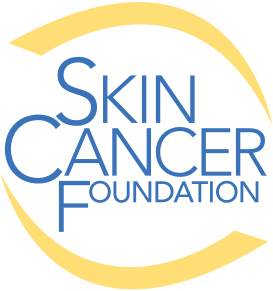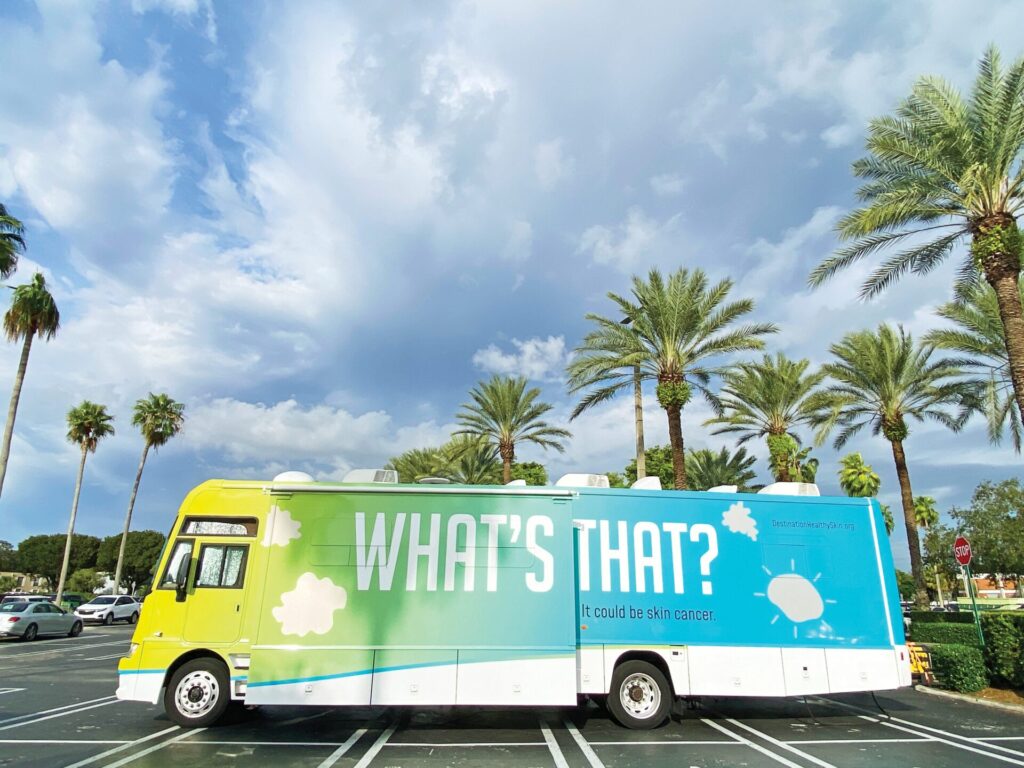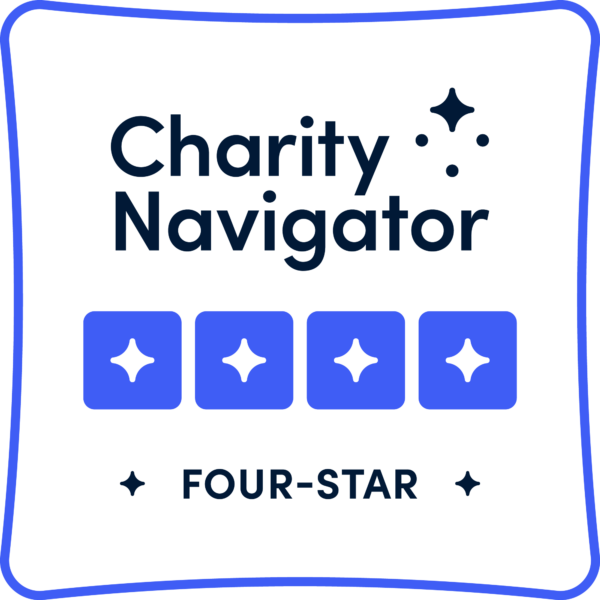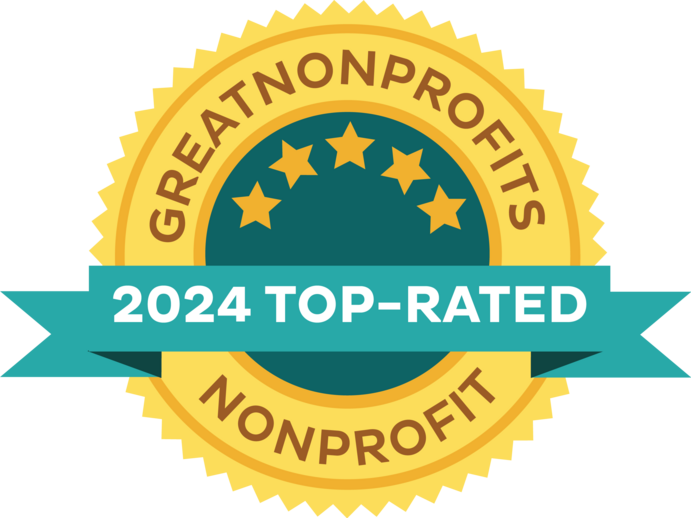The previous Destination Healthy Skin RV in Miami in 2024.
Year after year, mile after mile, The Skin Cancer Foundation’s mobile free screening and education program, Destination Healthy Skin (DHS), has built a lifesaving legacy of bringing dermatologists to people in communities around the country, touching countless lives along the way.
In 2025, DHS hit the road in style with a fresh, state-of-the-art RV and big plans to expand its reach — ushering in a new era of hope and progress in the fight against skin cancer.
Early Detection Saves Lives
Detecting skin cancers in their earliest stages, when they are easier to treat and cure, is at the heart of the Destination Healthy Skin program. Each year on average, our physician volunteers perform about 2,000 free full-body skin cancer screenings aboard an RV equipped with two private exam rooms.
But our impact goes far beyond skin exams. Every touchpoint at a DHS event aims to educate, leaving people better informed about the dangers of skin cancer and more motivated than ever to protect their skin from the sun. The Big See early detection public service ad plays in the waiting room; the RV walls are adorned with informative posters; dermatologists counsel each person they screen; and afterward, participants take away educational brochures and sun protection products.
“What we’re doing is educating and empowering people to be proactive about their skin health,” says Becky Kamowitz, executive director of The Skin Cancer Foundation.
Teamwork Makes the Dream Work
From planning routes, recruiting volunteers and stocking the RV to managing and publicizing events, Destination Healthy Skin is fueled by engaged physician volunteers, dedicated program staff, generous sponsors and individual donors who help us reach more people and save more lives.
Bringing Dermatologists to Patients
It’s a fact: In many U.S. communities, skin cancer screenings can be hard to come by. This access gap happens for several reasons: People may lack health insurance coverage, there could be months-long wait times for appointments or they may live in an area with few or no practicing dermatologists. That’s where DHS comes in — a program designed to reach people where they are.
“About 65 percent of participants receive their very first skin cancer screening onboard the Destination Healthy Skin RV,” explains Kamowitz. “In essence, it’s about bringing dermatologists to people and trying our best to provide this public service to communities that need it most. We want to be there for them.”
The Ultimate Outreach Tool
Once the DHS schedule is in place, our communications team coordinates with local television, newspaper and digital reporters to publicize nearby events. But the ultimate outreach tool could very well be the RV itself. When DHS arrives in town, it’s hard to miss. The RV’s big, bold exterior messaging: WHAT’S THAT? It Could Be Skin Cancer, makes you stop and think. Best of all, it’s convenient. You can get a free skin cancer screening right here, right now, no insurance needed. How can you turn that down?
“It’s incredible to see how many people walk in off the street, not having skin cancer on their radar but getting a screening because they see the RV. And we find something,” explains Jesse M. Lewin, MD, a DHS volunteer dermatologist. “We find a melanoma that’s in its early stages, potentially deadly in the later stages, and get to intervene and save lives.”
For dangerous skin cancers like melanoma, there’s a dramatic decline in survival rates once the cancer progresses. The estimated five-year survival rate for U.S. patients whose melanoma is detected early is about 99 percent. The survival rate falls to 75 percent when the disease reaches the lymph nodes and 35 percent when the cancer spreads to distant organs.
A Lifesaving Early Diagnosis
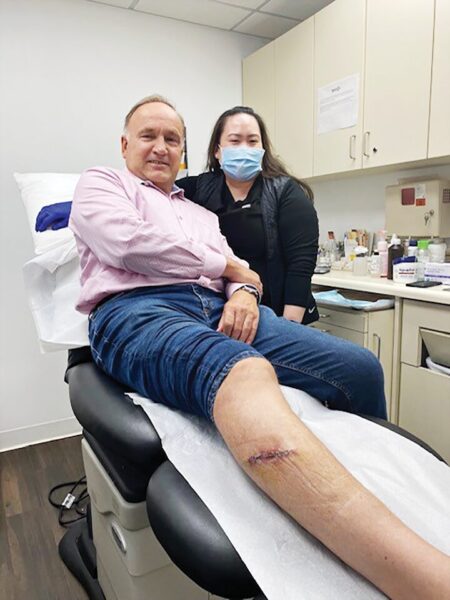
Peter Graylin and his surgeon, Jane Y. Yoo, MD, at Dr. Yoo’s office for suture removal.
In May 2022, when Peter Graylin arrived at his New York City office, he noticed the RV parked on the street.
“It was Skin Cancer Awareness Month, and right there was the mobile unit of The Skin Cancer Foundation,” Peter explains. “I said, ‘Oh, blow me down, I might go get checked. This is really convenient.’”
During the screening, Peter pointed out a mole on his right leg. Jane Y. Yoo, MD, a DHS volunteer dermatologist, examined the mole and strongly suspected that it was melanoma.
“It followed the classic ABCDE criteria in terms of what we look for in melanomas,” says Dr. Yoo. A biopsy performed the next day in Dr. Yoo’s office confirmed that Peter’s lesion was melanoma in situ. “Melanoma in situ is known as a thin melanoma, meaning that the cancer cells are contained in the top layer of the skin,” Dr. Yoo says. “They have not started to grow deeper.”
Soon thereafter, Dr. Yoo performed excisional surgery to successfully remove the cancer. Peter’s entire experience, from seeing the RV outside his office to his melanoma diagnosis and treatment, transformed his perspective about skin cancer and quite possibly saved his life.
“I was a perfect example of somebody who said, ‘Nah, I’ve never had an issue. Skin cancer will never happen to me,’” he says. “And then, blow me down, it did.”
What People Say About DHS
Our Impact Over the Years
32,000 free full-body skin cancer screenings provided.
13,000 potential skin cancers and precancers detected, including
615 suspected melanomas.
100,000 + people reached with educational material and sun protection products.
And we're not done yet!
